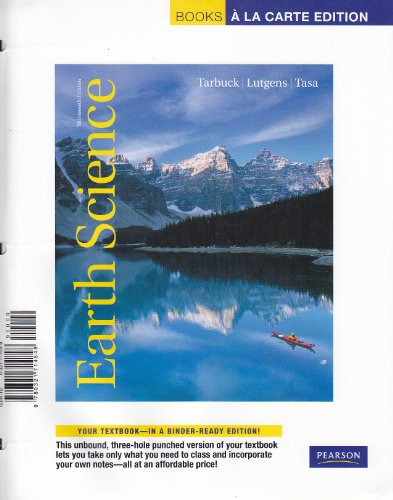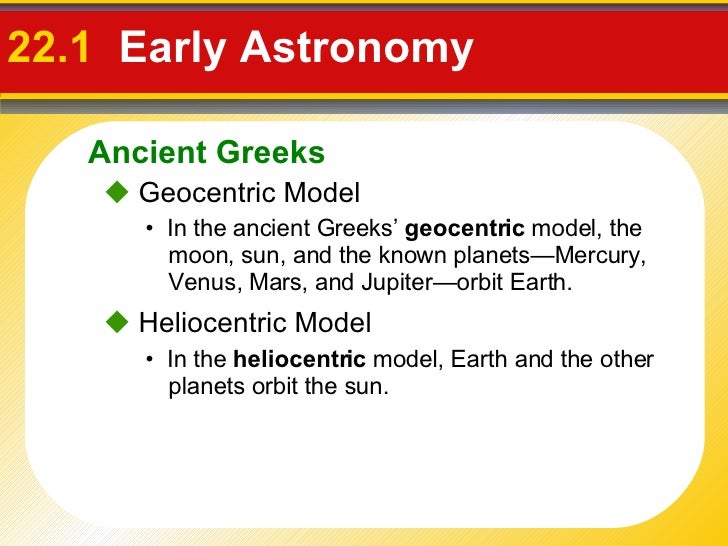Earth Science Tarbuck Lutgens 12th Edition
About The Author Dennis G. TasaDennis Tasa has been a very renowned illustrator of many best=selling geoscience textbooks since 1978, including Laboratory Manual in Physical Geology by the American Geosciences Institute and the National Association of Geoscience Teachers, Physical Geography by Darrel Hess, as well as the physical geology, Earth science, and meteorology franchises by the famous Tarbuck and Lutgens. He has created illustrations and media for the NSF-funded projects and Mineralogical Society of America. In addition to numerous educational Earth science apps, he has worked on various Earth science media, including Pearson's GEODe. In his spare time, Tasa has joined the Taos fine art community by painting under the direction of the artist in residence at one of Taos' historic museums. TarbuckEdward J.
- Earth Science Tarbuck Lutgens Free Download
- Tarbuck Earth Science
- Earth An Introduction To Physical Geology 12th Edition Free
Tarbuck and Frederick K. Lutgens have been great friends and colleagues since 1970. Between them, they have more than 58 years of experience teaching geology to undergraduate students, and both of them have been recognized with awards as excellent and inspiring professors. They share a special interest in introducing geology to beginning students and a belief in the value of field experience for students of all levels.Tarbuck and Lutgens published their first college textbook, Earth Science, in 1976.

That book, winner of the McGuffy Award from the Text and Academic Authors Association, is now in its 13th edition. In 1983, as the 1st edition of Earth was being prepared, gifted geology illustrator Dennis Tasa joined the author team. Since then the three have collaborated on more than 20 projects. Not only do Lutgens, Tarbuck, and Tasa work well together creatively; they also enjoy spending time in the Sangre de Cristo Mountains near Tasa’s New Mexico studio.Edward enjoys downhill skiing in Colorado, fly fishing near his childhood home in Northern Minnesota, and spending time in the Cascades. Frederick is an avid runner, and when he can make the time, truly enjoys hiking the canyons of the Colorado Plateau. Although Tarbuck and Lutgens think alike on many issues, they do not agree on everything. Tarbuck prefers pop artists or a good country station, whereas Lutgens is devoted to jazz and classical music.

Lutgens is a Professor Emeritus at Illinois Central College. For 30+ years, Fred served as Professor of geosciences at Illinois Central College. During his career, Dr. Lutgens was awarded “The Faculty Who Make a Difference” honor in recognition of his outstanding academic performance and dedication to his students. He received his B.S. From Illinois State University.
With its strong readability and engaging, awesome instructive illustrations, this trusted bestseller returns with a hybrid and streamlined focus on core principles. The PDF eBook, Tarbuck and Lutgens’s Earth: An Introduction to Physical Geology 12th edition (global) maintains a learning objective-driven approach throughout each chapter: The etextbook provides readers with a structured learning path, tied to learning objectives with opportunities for readers to demonstrate their understanding at the end of each section. The authors’ emphasis on relevance and currency includes the latest thinking in the field, particularly in the dynamic area of plate tectonics.Learning Objective-driven textbook, using augmented reality to bring geology to lifeThe latest 12th Edition, Pearson Science’s first augmented reality, hybrid etextbook, uses the BouncePages image recognition app (FREE on both Android and iOS stores) to connect readers’ digital devices to the printed hardcopy textbook, enhancing their learning and reading experience. Tarbuck/Lutgens’s innovative SmartFigures feature has been expanded, adding new digital content via Mobile Field Trips, Project Condor, by Michael Collier, Animated Figures, and additional tutorial videos from Callan Bentley.Also available with Mastering Geology (sold separately)Mastering™ Geology is an online tutorial, homework, and assessment program designed to work with this textbook to engage geology students and improve results. Interactive, self-paced tutorials provide individualized coaching to help students stay on track. With a wide range of activities available, college students can actively understand, learn, and retain even the most difficult concepts.Note: You are purchasing a standalone PDF product; Mastering Geology does not come packaged with this content. Also, this is the Global version.
We also have the US version available.P.S we also have Earth: An Introduction to Physical Geology (12th Edition – Global) testbank, instructor manual and other resources for sale. Contact for more info.
For all introductory physical geology courses. Learning Objective-driven textbook, using augmented reality to bring geology to life With its strong readability and engaging, instructive illustrations, this trusted bestseller returns with a hybrid and streamlined focus on core principles. Earth: An Introduction to Physical Geology maintains a learning objective-driven approach throughout each chapter: The text provides readers with a structured learning path, tied to learning objectives with opportunities for readers to demonstrate their understanding at the end of each section. The authors&rsquo. Emphasis on currency and relevance includes the latest thinking in the field, particularly in the dynamic area of plate tectonics.
Earth Science Tarbuck Lutgens Free Download
The 12th Edition, Pearson Science&rsquo.s first augmented reality, hybrid textbook, uses the BouncePages image recognition app (FREE on both iOS and Android stores) to connect readers'. Digital devices to the print textbook, enhancing their reading and learning experience. Tarbuck/Lutgens&rsquo.s innovative SmartFigures feature has been expanded, adding new digital content via Project Condor, Mobile Field Trips by Michael Collier, Animated Figures, and additional tutorial videos from Callan Bentley. Also available with Mastering Geology Mastering&trade. Geology is an online homework, tutorial, and assessment program designed to work with this text to engage students and improve results. Interactive, self-paced tutorials provide individualized coaching to help students stay on track.
With a wide range of activities available, students can actively learn, understand, and retain even the most difficult concepts. Note: You are purchasing a standalone product. Mastering Geology does not come packaged with this content. Students, if interested in purchasing this title with Mastering Geology, ask your instructor for the correct package ISBN and Course ID.
Tarbuck Earth Science
Instructors, contact your Pearson representative for more information. If you would like to purchase both the physical text and Mastering Geology, search for:. / 644.Earth: An Introduction to Physical Geology Plus Mastering Geology with eText - Access Card Package.
Earth An Introduction To Physical Geology 12th Edition Free

Package consists.of: / 252.Earth: An Introduction to Physical Geology / 643.Mastering Geology with Pearson eText - ValuePack Access Card - for Earth: An Introduction to Physical Geology Earth: An Introduction to Physical Geology, 12th.Edition.is also available via.Pearson eText, a simple-to-use, mobile, personalized reading experience that lets instructors connect with and motivate students &ndash. Right in their eTextbook.Learn more.Sample questions asked in the 12th edition of Earth: Based on the chart in Figure, what do muscovite and biotite have in common? How do they differ? Common silicate minerals Note that the complexity of the silicate structure increases from top to bottom. (Photos by Dennis Tasa and E. Tarbuck) During a field trip with your geology class you visit an exposure of rock layers similar to the one sketched here. A fellow student suggests that the layer of basalt is a sill.
You, however, disagree. Why do you think the other student is incorrect? What is a more likely explanation for the basalt layer? Speculate about some of the possible consequences that a great and prolonged increase in explosive volcanic activity might have on each of Earth’s four spheres. Examine the precipitation map for the state of Nevada. Notice that the areas receiving the most precipitation resemble long, slender “islands” scattered across the state. Provide an explanation for this pattern.
How does the ocean remove carbon dioxide from the atmosphere? What role do tiny marine organisms, such as foraminifera, have in the removal of carbon dioxide?